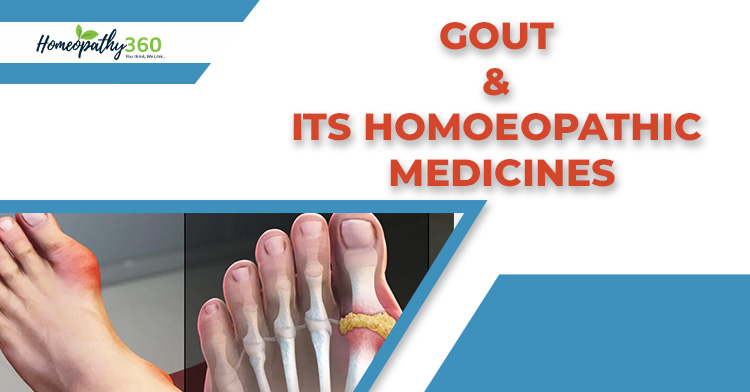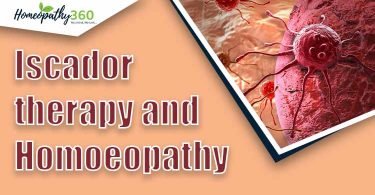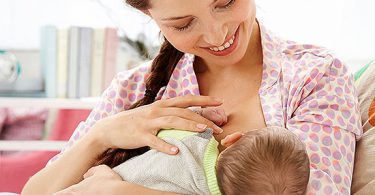
ABSTRACT-
Gout is a disorder that causes sudden attacks of intense pain, swelling, and redness in the joints or soft tissues. It develops when too much uric acid accumulates in bloodstream. In this article, general information of gout is mentioned along with the approach of homoeopathic medicines, which has sphere of action on joints.
KEYWORDS: – Gout, Homoeopathy,Synovial Fluid Analysis, Hyperuricemia, Monosodium Urate, Homoeopathic Medicines, Tophi, Uric Acid.
INTRODUCTION
Gout is a metabolic disease characterized by hyperuricemia. It is due to excessive accumulation of uric acid, which is an end product of purine metabolism. Super saturation of body fluid causes precipitation of urate crystals (Monosodium urate -MSU).
Gout was first recognized even before the Common Era, and hence it is the most understood and manageable disease among all rheumatic diseases.1, 2, 3
ETIOPATHOGENESIS–
Precipitation of MSU in joint causes inflammation.
It is due to phagocytosis by synovocytes, which release cytokines like TNF and IL-1. Inflammation causes migration of lymphocytes and neutrophils.
Pathognomic feature of gout are tophi, which are large aggregates of urate crystal surrounded by inflammatory cells. Tophi are found in articular cartilage, ligaments, tendons. Tophi are also found in soft tissues eg. Ear lobule, nasal septum, finger tips.
Hyperuricemia also cause gouty nephropathy, which means Tophi in renal medulla, urate calculus, and intratubular deposition of urate.
Gout is of two types:-
Primary: overproduction of uric acid d/t unknown enzyme defect,
Secondary: d/t increase breakdown of tissues e.g. Chemotherapy of leukemia, lymphoma.
Chronic renal disease due to decreased excretion
CLINICAL FEATURES:
- Common in males than females usually common after the age of 30 years.
- Patient has long period of hyperuricemia.
a. Then patient develops acute arthritis in the form of severe pain, with erythema and warmth and mild fever may occur.
b. in most of patient first attack is monoarticular involving metatarsophalangeal joint mostly. But other joints eg. Wrist, heel and ankle may be involved. Sometimes in Heberdens node/Bouchard’s node may be involved.
c. More than one joint may occur in males who are hypertensive/alcoholic and in postmenopausal females.
d. Usually first attack of gout occurs at night.
RESOLUTION:
- If untreated acute gout lasts for hours and weeks. However, it gradually resolves and patient enters an asymptomatic period.
- With treatment, the attack usually is over in 10days.
RELAPSE
- Most patients experience second attack within few months or years.
- Without treatment, attack occur at shorter interval and frequently & it becomes polyarticular.
- After a decade or more symptom don’t resolve completely after each episode and patients develops chronic tophaceous gout and x-rays show
1. Decrease joint space
2. Bone erosion due to crystal deposition.
Renal manifestations include renal colic and renal failure.
PRECIPITATING FACTORS:
1. Excessive animal protein
2. Excessive alcohol
3. Trauma
4. Withdrawl of steroids.
5. Hypourecemic therapy.
DIAGNOSIS:
• Serum Uric acid-
It is elevated during the course of disease but during attack it may be normal or decreased. So normal level does not rule out disease.
- Joint x-ray-
Change seen in chronic cases:
- Decreased joint space
- Punched out erosions at bone margin.
· Synovial Fluid Analysis
If symptoms does not improve with treatments, then a synovial fluid analysis is recommend. This is a more accurate test for gout. In gout, synovial fluid will be excessive containing white blood cells and uric acid crystals, which is seen with polarized microscopy. This technique may also identify uric acid crystals from previously affected tophaceous deposits and joints during the inter-critical period.3, 4
TREATMENT:
Asymptomatic patients with hyperuricemia do not require treatment.
Symptomatic patients always need to treat with medications.
Homoeopathy as a boon has a huge range of medicines, which have been proved effective in maladies of joints and articular system. The homoeopathic materia medicas has vividly described the features, which came in drug proving and trials.
Few well-known remedies most commonly indicated in case of gouty pain are mentioned in William Boericke materia medica as follows
Colchicum:
Extremities: Sharp pain down left arm. Tearing in limbs during warm weather, stinging during cold. Pins and needles in hands and wrists, fingertips numb. Pain in front of thigh. Right plantar reflex abolished. Limbs, lame, weak, tingling. Pain worse in evening and warm weather. Joints stiff and feverish; shifting rheumatism; pains worse at night. Inflammation of great toe, gout in heel, cannot bear to have it touched or moved. Tingling in the finger nails. Knees strike together, can hardly walk. odematous swelling and coldness of legs and feet.
Modalities: Worse, sundown to sunrise; motion, loss of sleep, smell of food in evening, mental exertion. Better, stooping.
Benzoic acid:
Extremities: Joints crack on motion. Tearing with stitches. Pain in tendo Achillis. Rheumatic gout; nodes very painful. Gouty deposits. Ganglion; swelling of the wrist. Pain and swelling in knees. Bunion of great toe. Tearing pain in great toe.
Modalities: Worse, in open air; by uncovering.
Arnica:
Extremities: Gout. Great fear of being touched or approached. Pain in back and limbs, as if bruised or beaten. Sprained and dislocated feeling. Soreness after overexertion. Everything on which he lies seems too hard. Deathly coldness of forearm. Cannot walk erect, on account of bruised pain in pelvic region. Rheumatism begins low down and works up (Ledum).
Modalities: Worse, least touch; motion; rest; wine; damp cold. Better, lying down, or with head low.
Ledum palustre:
Extremities: Gouty pains shoot all through the foot and limb, and in joints, but especially small joints. Swollen, hot, pale. Throbbing in right shoulder. Pressure in shoulder, worse motion. Cracking in joints; worse, warmth of bed. Gouty nodosities. Ball of great to swollen (Bothrops). Rheumatism begins in lower limbs and ascends (Kalmia opposite). Ankles swollen. Soles painful, can hardly step on them (Ant c; Lyc). Easy spraining of ankle.
Modalities: Better, from cold, putting feet in cold water. Worse, at night, and from heat of bed.
Urtica urens:
Extremities: Pain in acute gout deltoid; pain in ankles, wrists.
Modalities: Worse, from snow-air; water, cool moist air, touch.
Antimonium crud:
Extremities: Twitching of muscles. Jerks in arms. Arthritic pain in fingers. Pain in heels.
Modalities: Worse, in evening, water, and washing. Wet poultices.
Better, in open air, during rest. Moist warmth.
Sabina:
Extremities: Bruised pains in anterior portion of thighs. Shooting in heels and metatarsal bones. Arthritic pain in joints. Gout; worse, in heated room. Red, shining swelling. Gouty nodosities (Ammon phos).
Modalities: Worse, from least motion, heat, warm air.
Better, in cool fresh air.
Ammonium phos:
A remedy for chronic gouty patients uric acid diathesis, indicated in bronchitis and nodosities of the joints of the fingers and backs of the hands.
Berberis vulgaris:
Extremities: Rheumatic paralytic pain in shoulders, arms, hands and fingers, legs and feet. Neuralgia under fingernails, with swelling of finger-joints. Sensation of cold on outside of thighs. Heels pain, as if ulcerated. Stitching between metatarsal bones as from a nail when standing. Pain in balls of feet on stepping. Intense weariness and lameness of legs after walking a short distance.
Modalities: Worse, motion, standing. It brings on, or increases, urinary complaints.
Lycopodium:
Extremities: Numbness, also drawing and tearing in limbs, especially while at rest or at night. Heaviness of arms. Tearing in shoulder and elbow joints. One foot hot, the other cold. Chronic gout, with chalky deposits in joints. Profuse sweat of the feet. Pain in heel on treading as from a pebble. Painful callosities on soles; toes and fingers contracted. Sciatica, worse right side. Cannot lie on painful side. Hands and feet numb. Right foot hot, left cold. Cramps in calves and toes at night in bed. Limbs go to sleep. Twitching and jerking.
Modalities: Worse, right side, from right to left, from above downward, 4 to 8 pm; from heat or warm room, hot air, bed.
Rhododendron:
Extremities: Joints swollen. Gouty inflammation of great toe-joint. Rheumatic tearing in all limbs, especially right side; worse, at rest and in stormy weather. Stiffness of neck. Pain in shoulders, arms, wrists; worse when at rest. Pains in bones in spots, and reappear by change of weather. Cannot sleep unless legs are crossed.
Modalities: Worse, before a storm. All symptoms reappear in rough weather, night, towards morning. Better, after the storm breaks, warmth, and eating.
REFRENCES:-
1.Richette P, Bardin T. Gout. Lancet. 2010 Jan 23;375(9711):318-28. [PubMed]
2.Nuki G, Simkin PA. A concise history of gout and hyperuricemia and their treatment. Arthritis Res Ther. 2006;8 Suppl 1:S1. [PMC free article] [PubMed]
3. Fenando A, Rednam M, Gujarathi R, et al. Gout. [Updated 2022 May 21]. In: StatPearls [Internet]. Treasure Island (FL): StatPearls Publishing; 2022 Jan-.
4. Pascual E, Batlle-Gualda E, Martínez A, Rosas J, Vela P. Synovial fluid analysis for diagnosis of intercritical gout. Ann Intern Med. 1999 Nov 16;131(10):756-9. [PubMed]
5. Boericke W. Pocket manual of homoeopathic materia medica and repertory. (51st Impression), B. Jain Publishers (P) Ltd, New Delhi, India (2011).
About Authors:-
Dr. Sana Khan
M.D. (2019 Batch)
Dr. Shruti Patel
M. D. (2020 Batch)
State National Homoeopathic Medical College & Hospital
Lucknow




